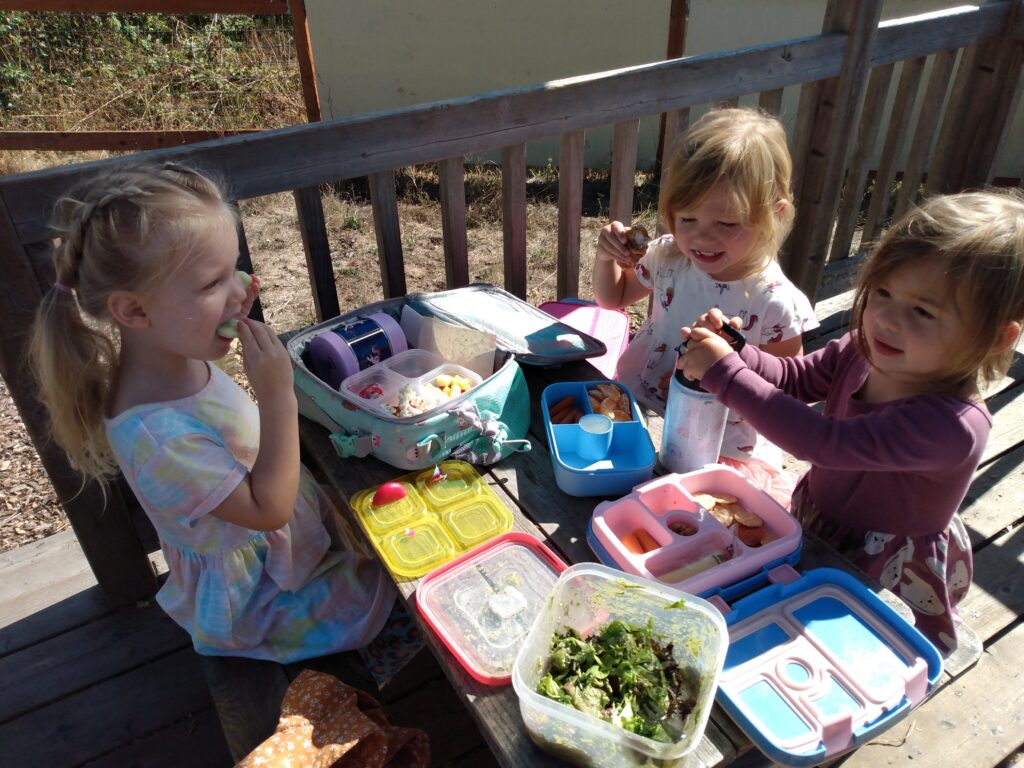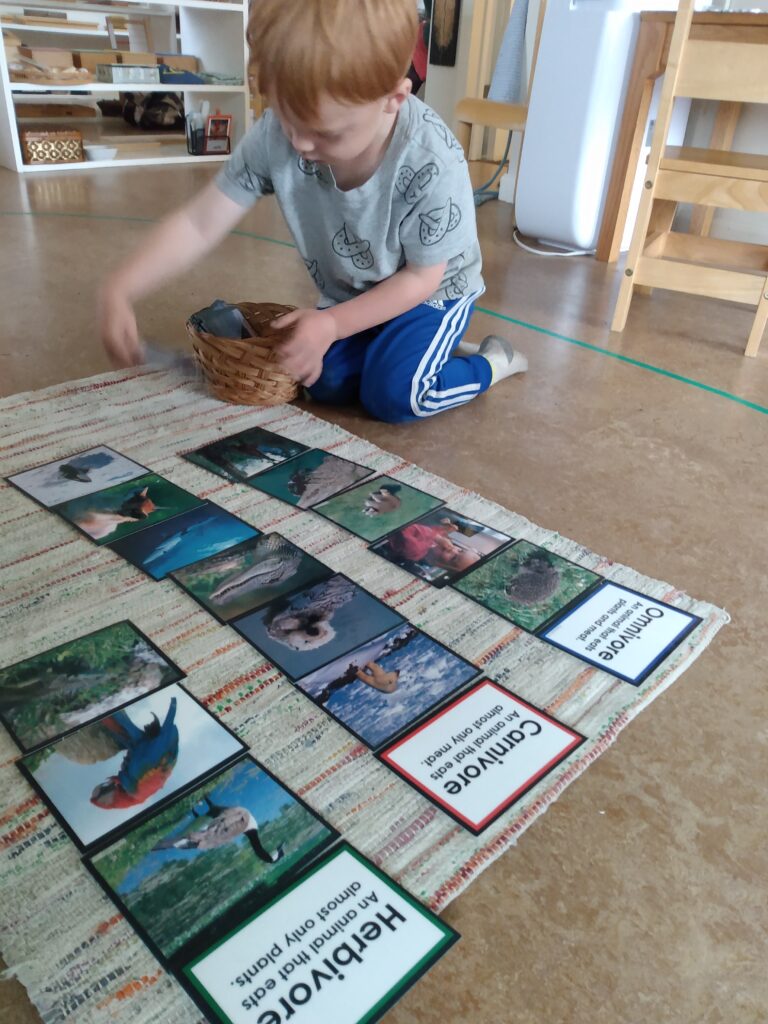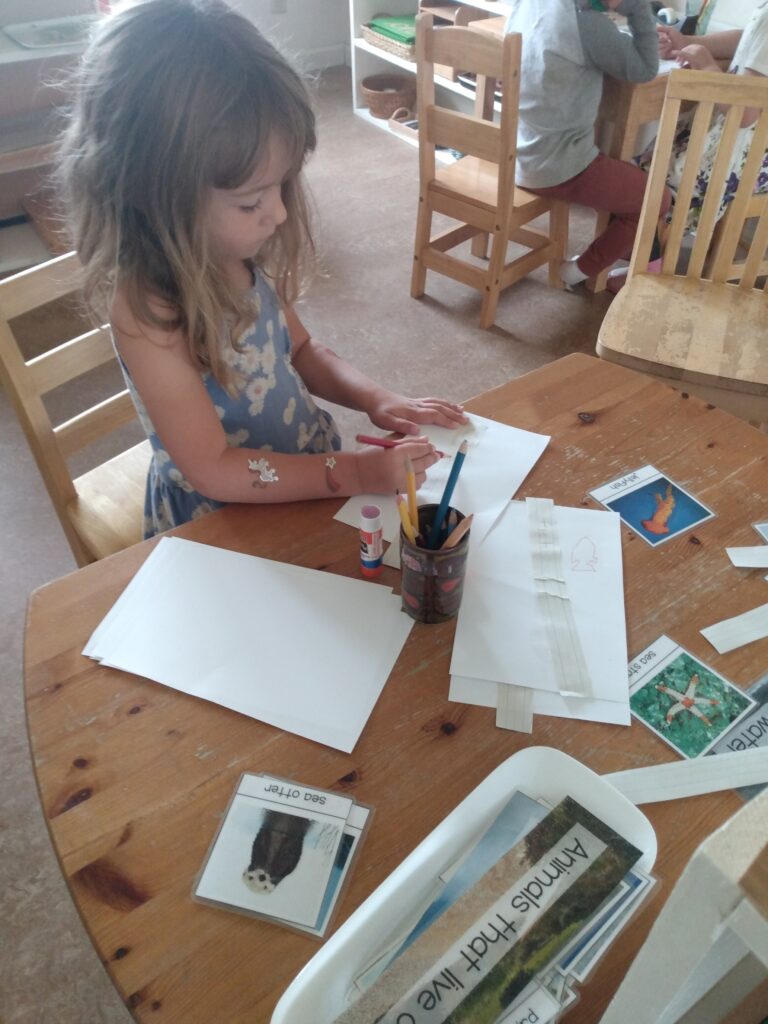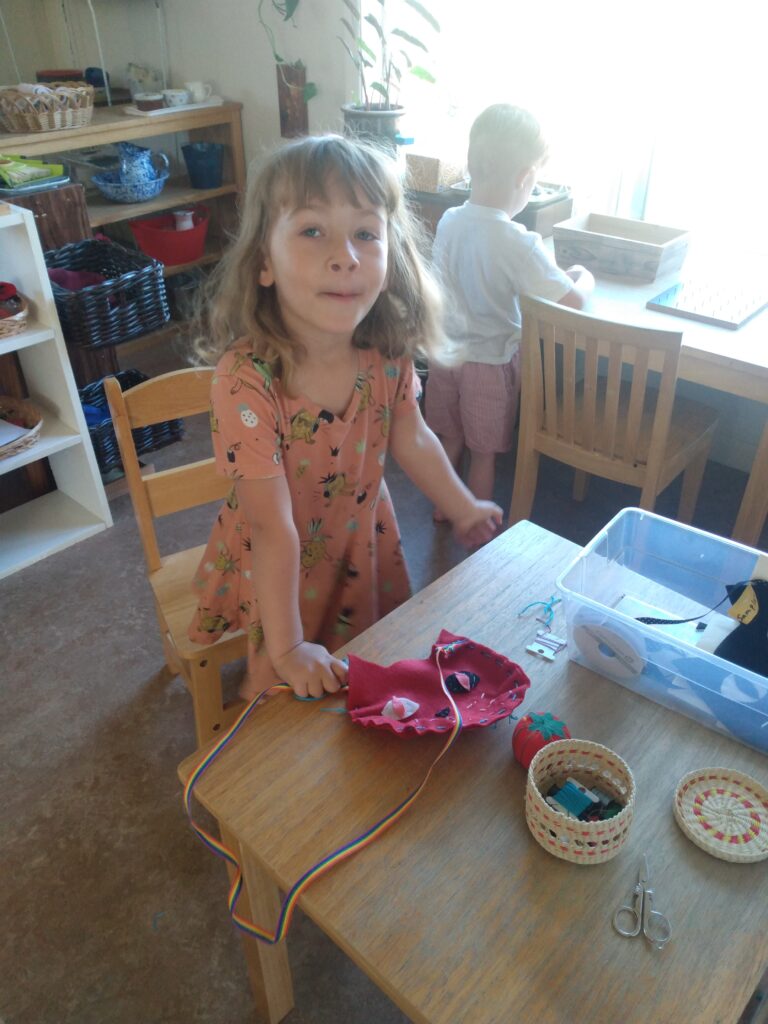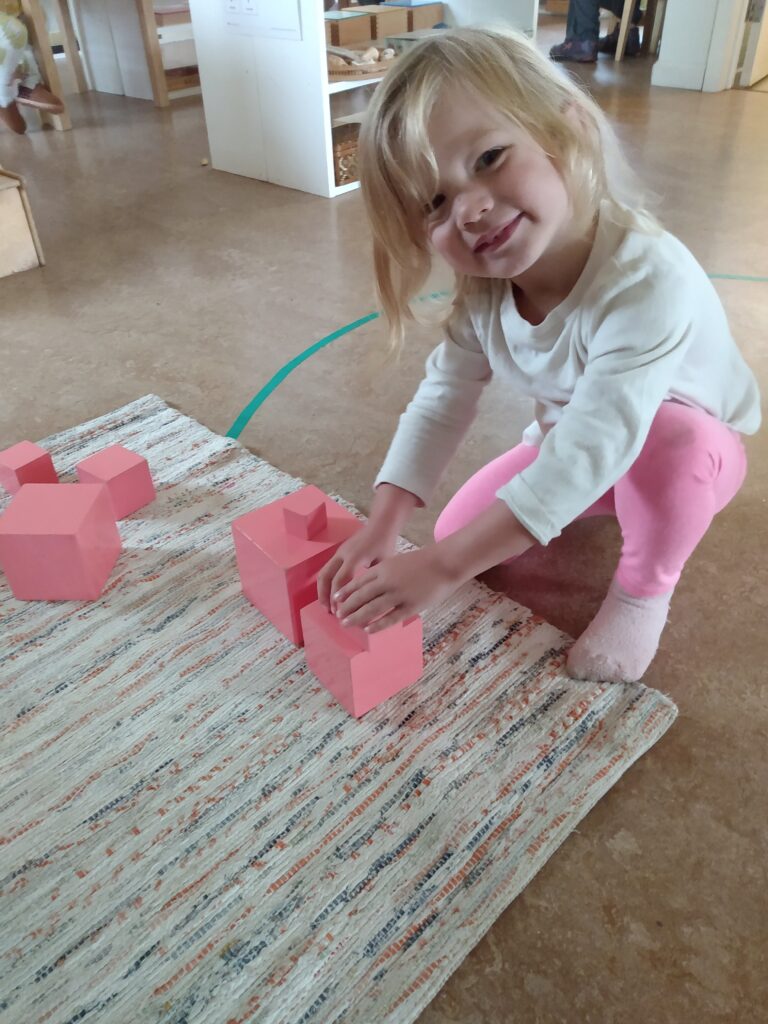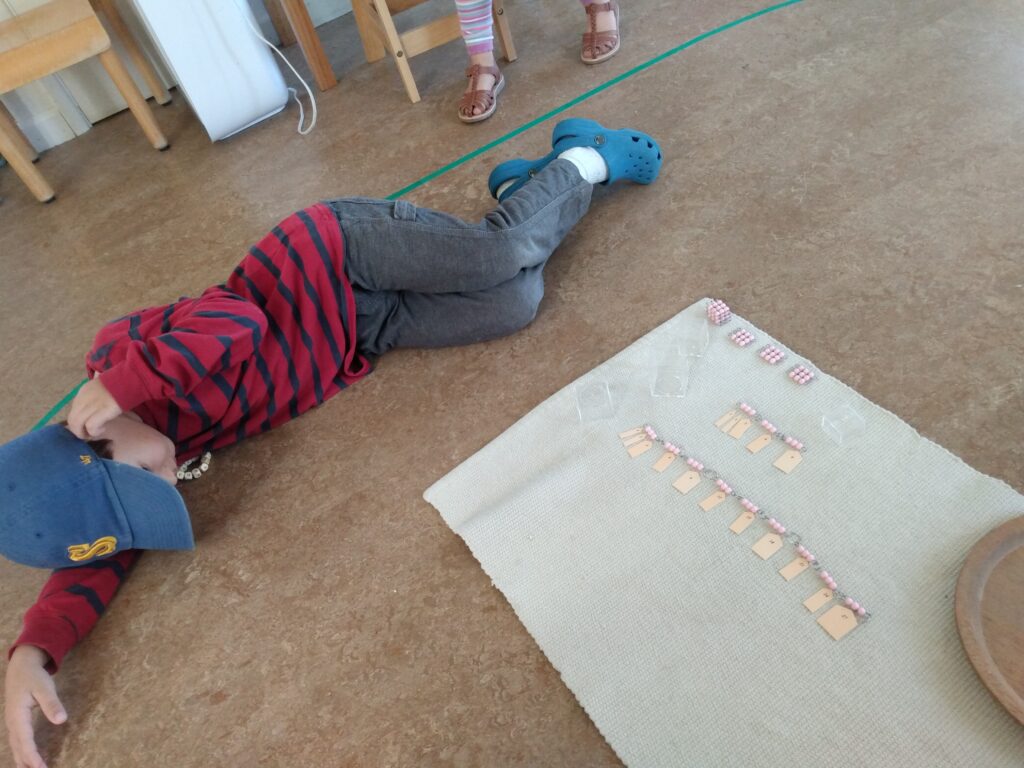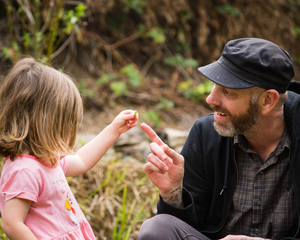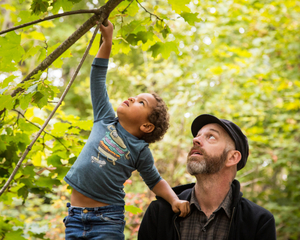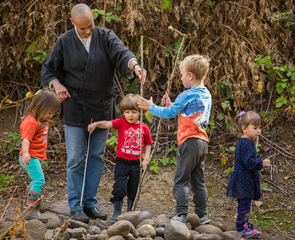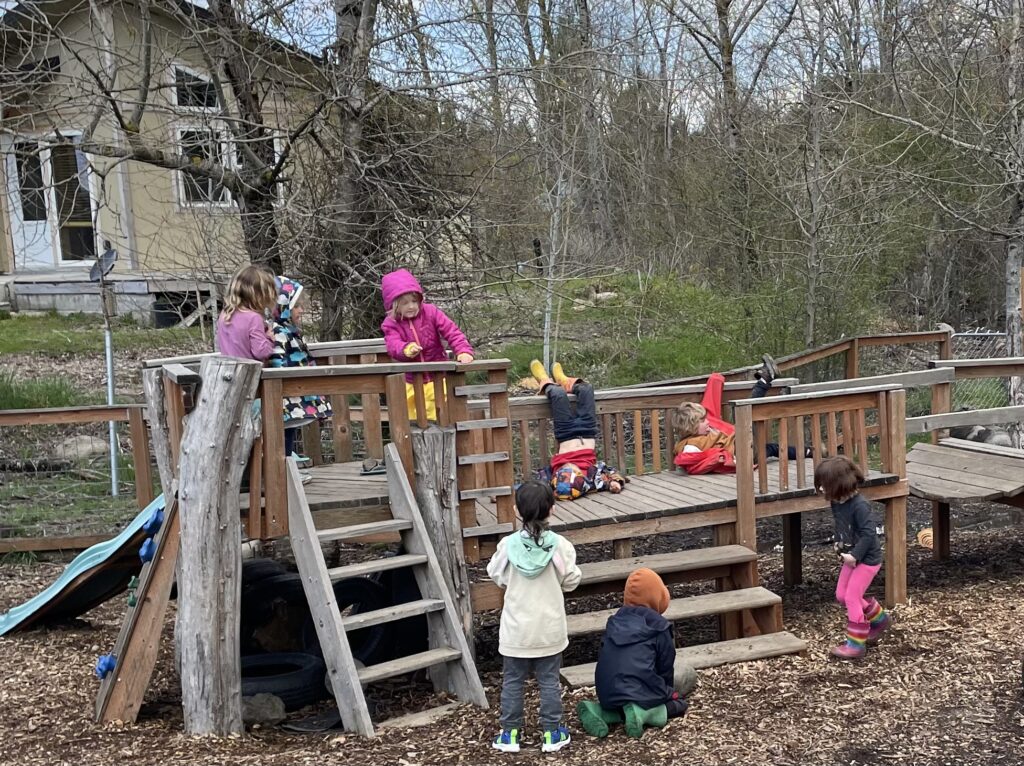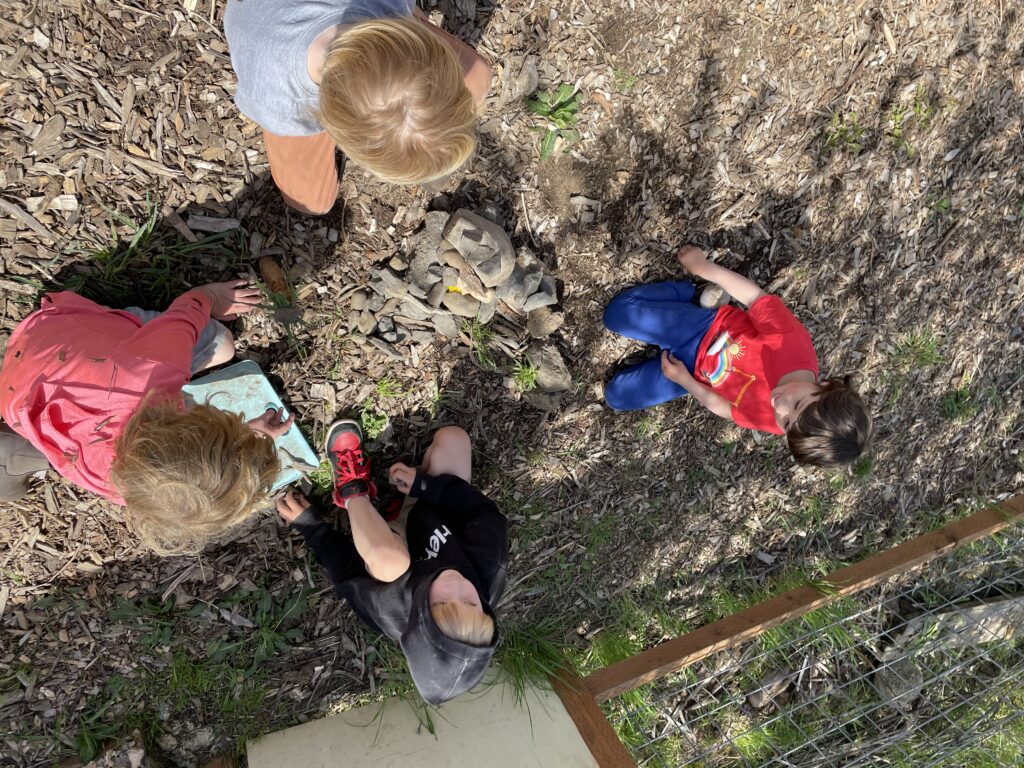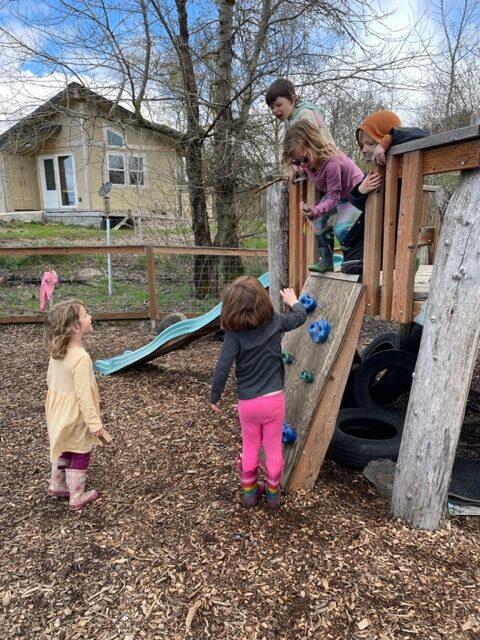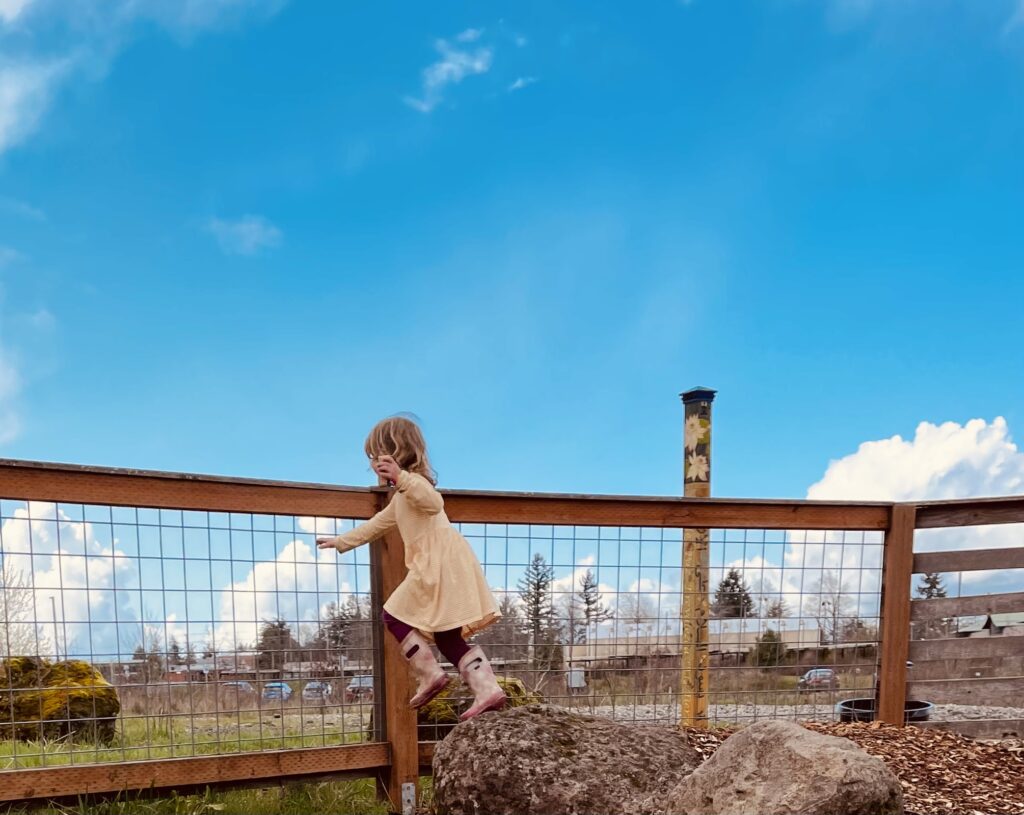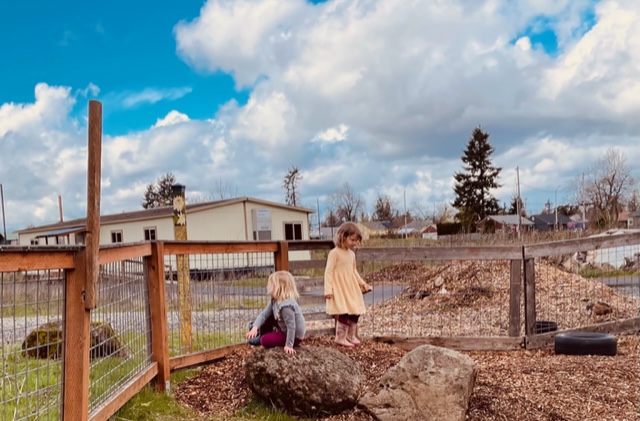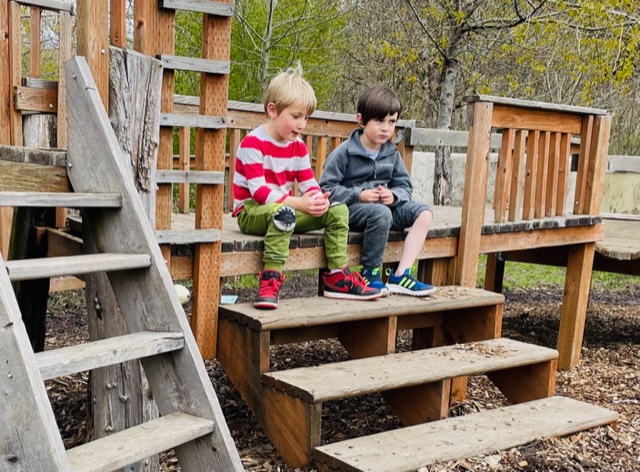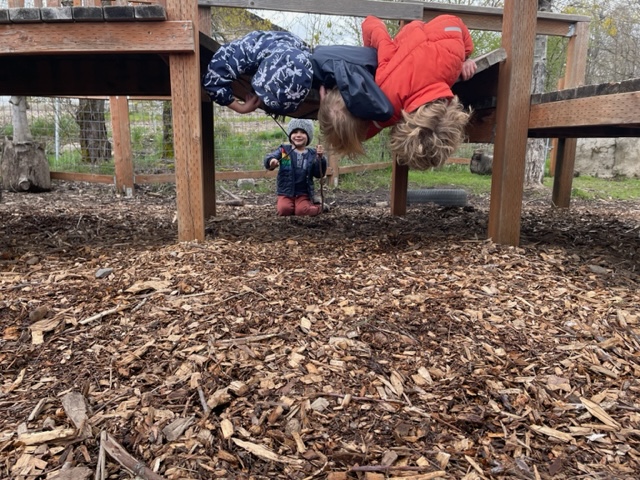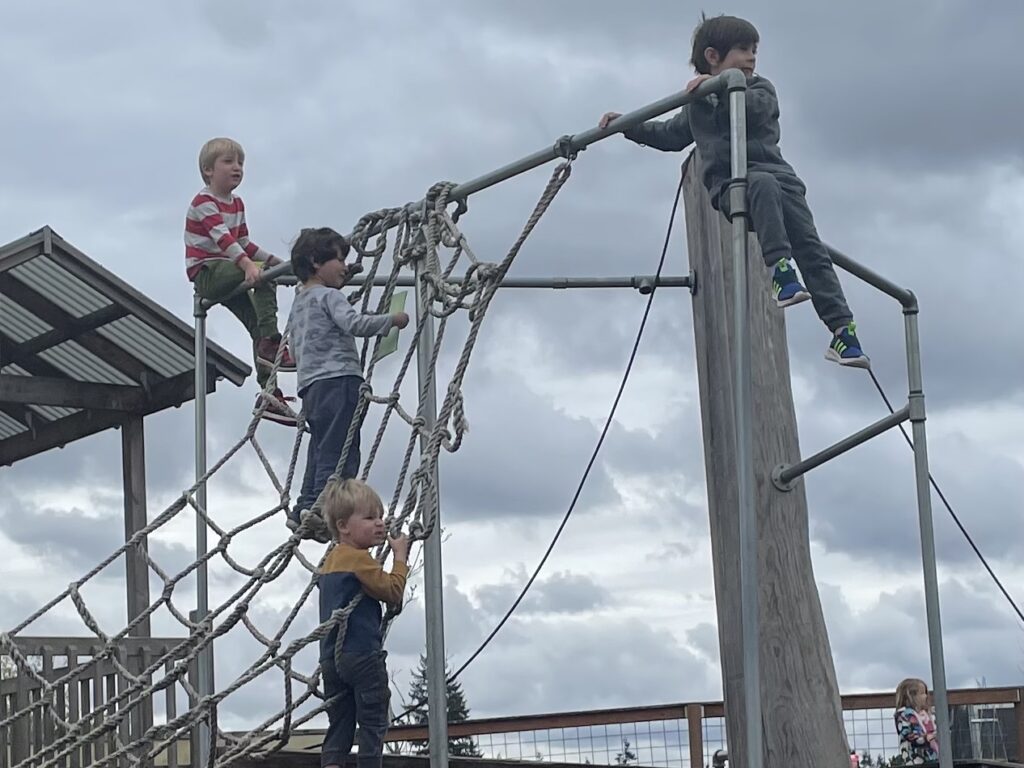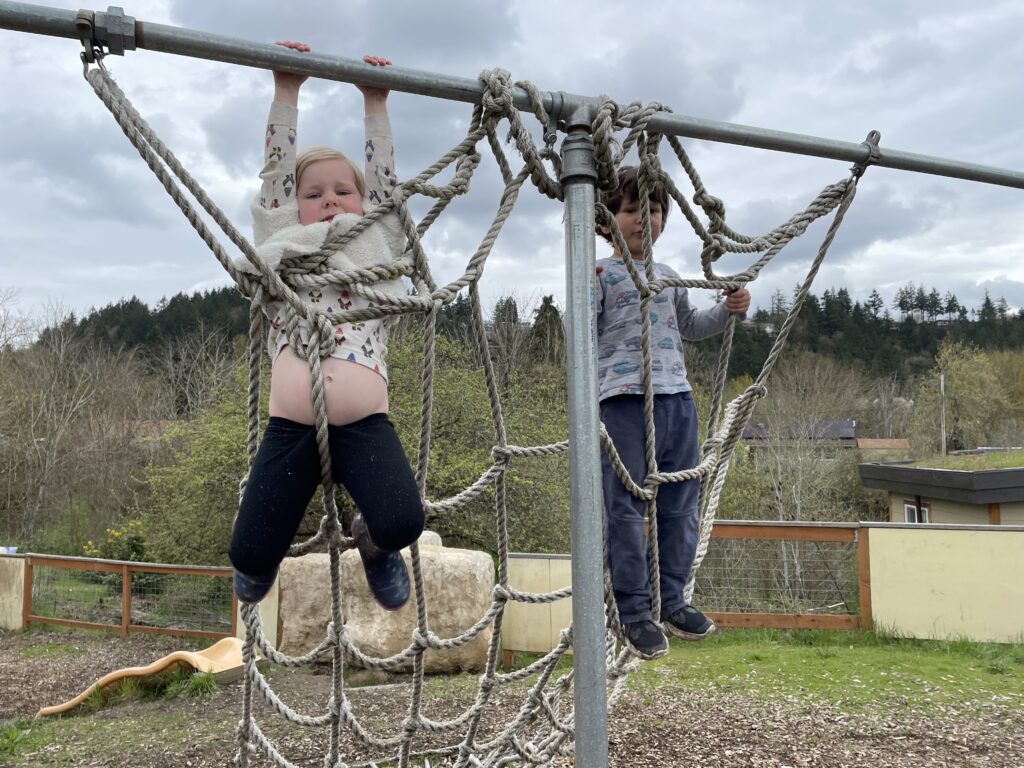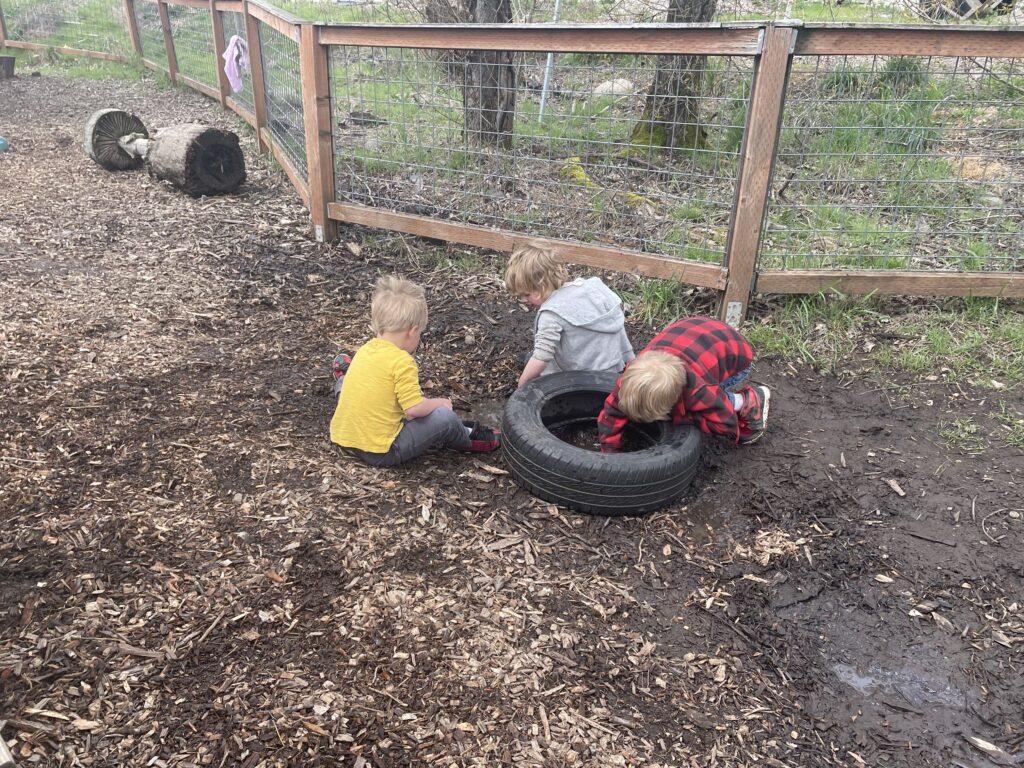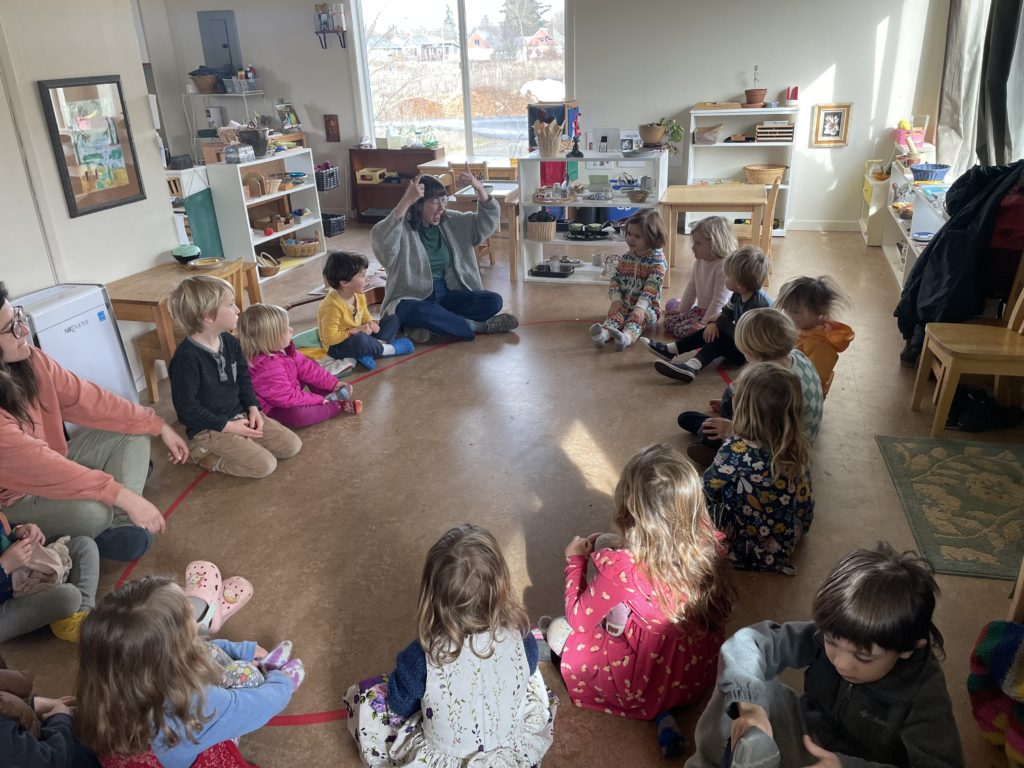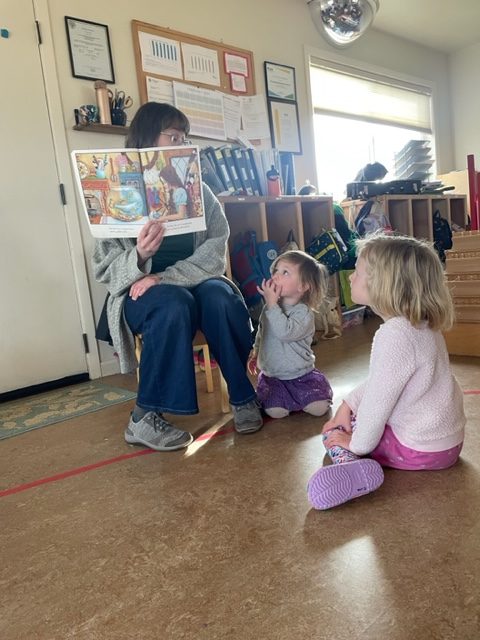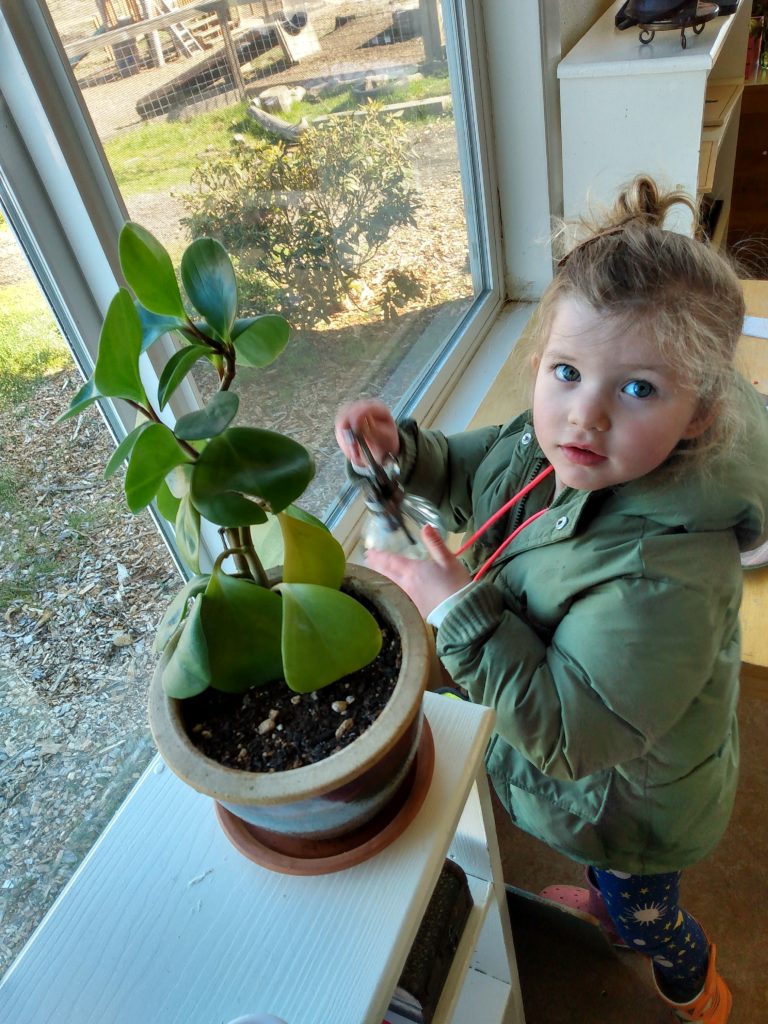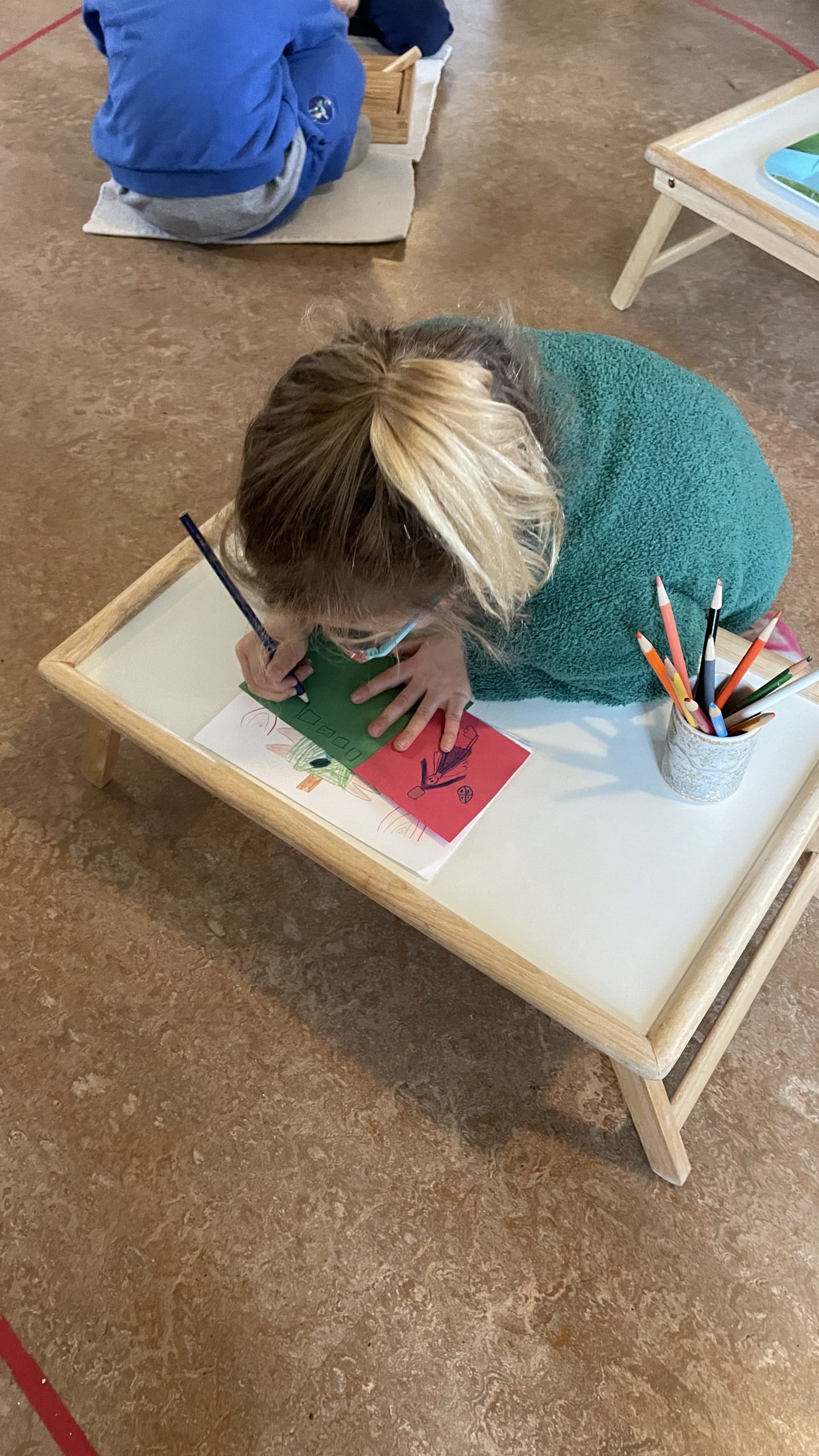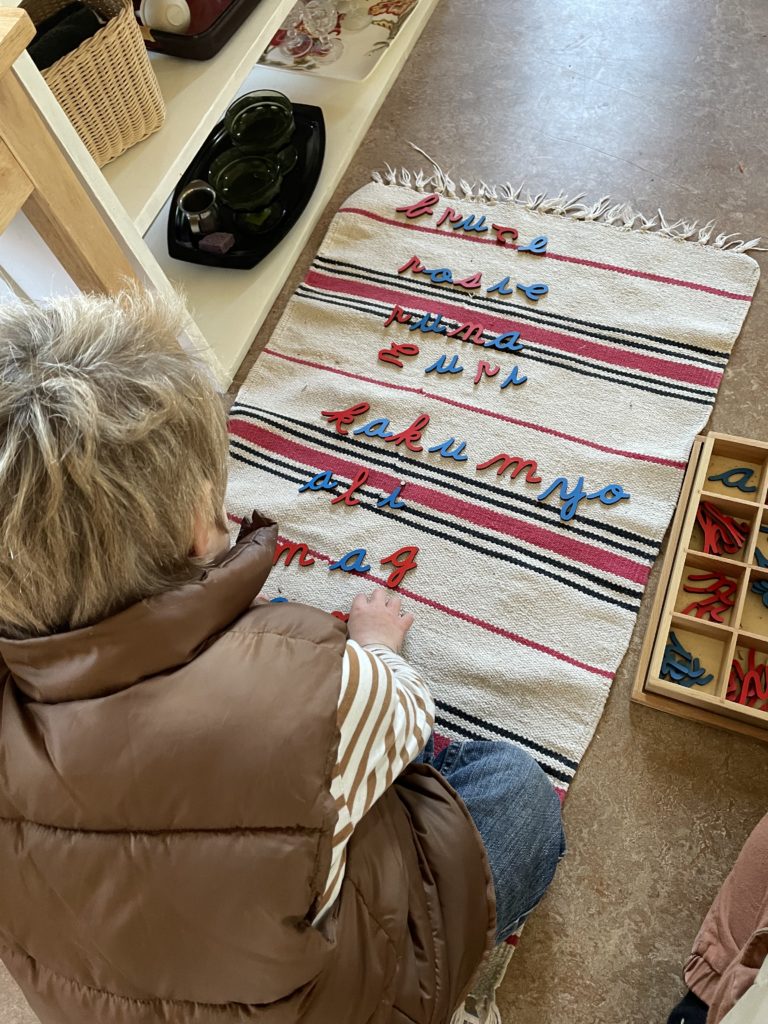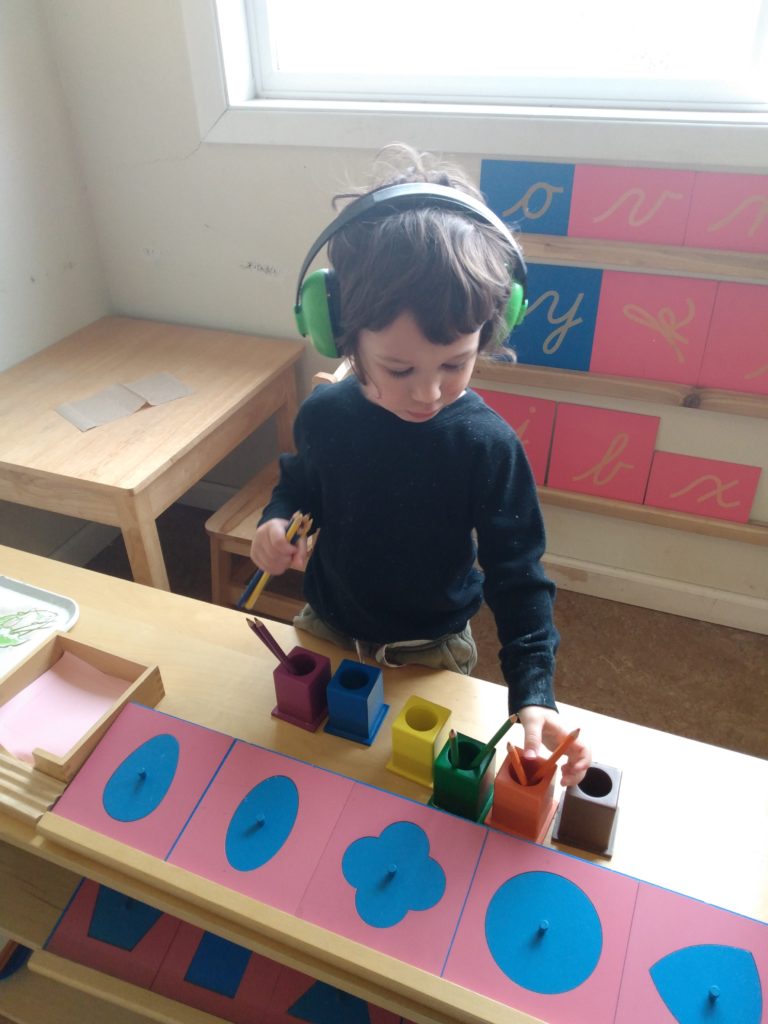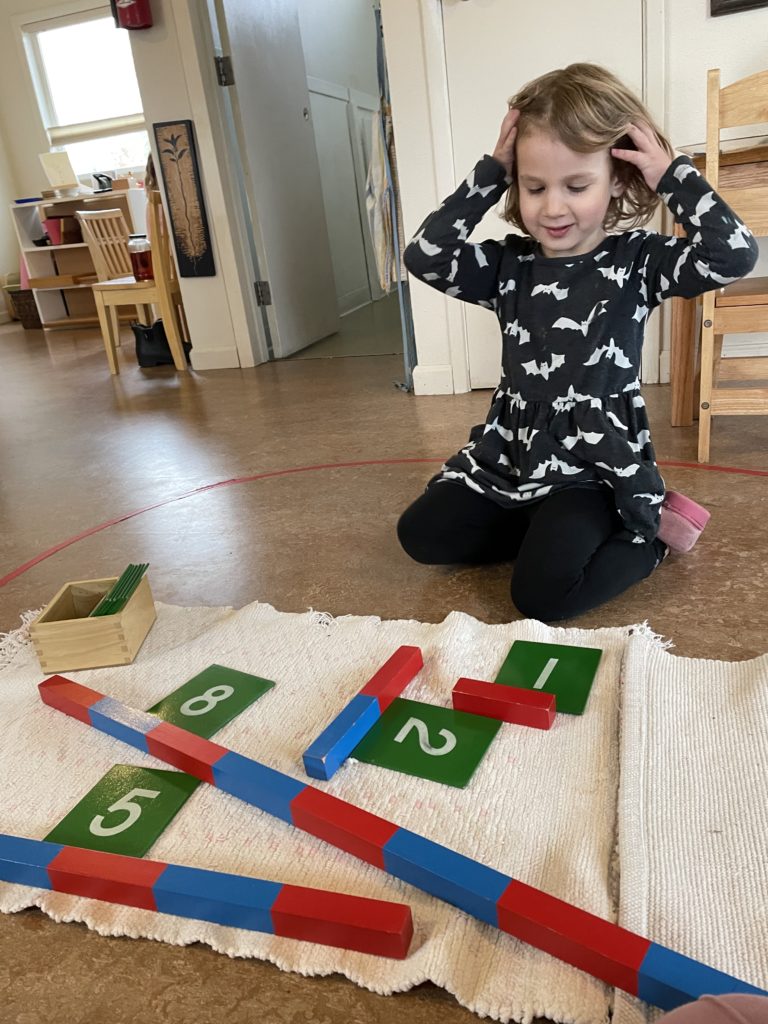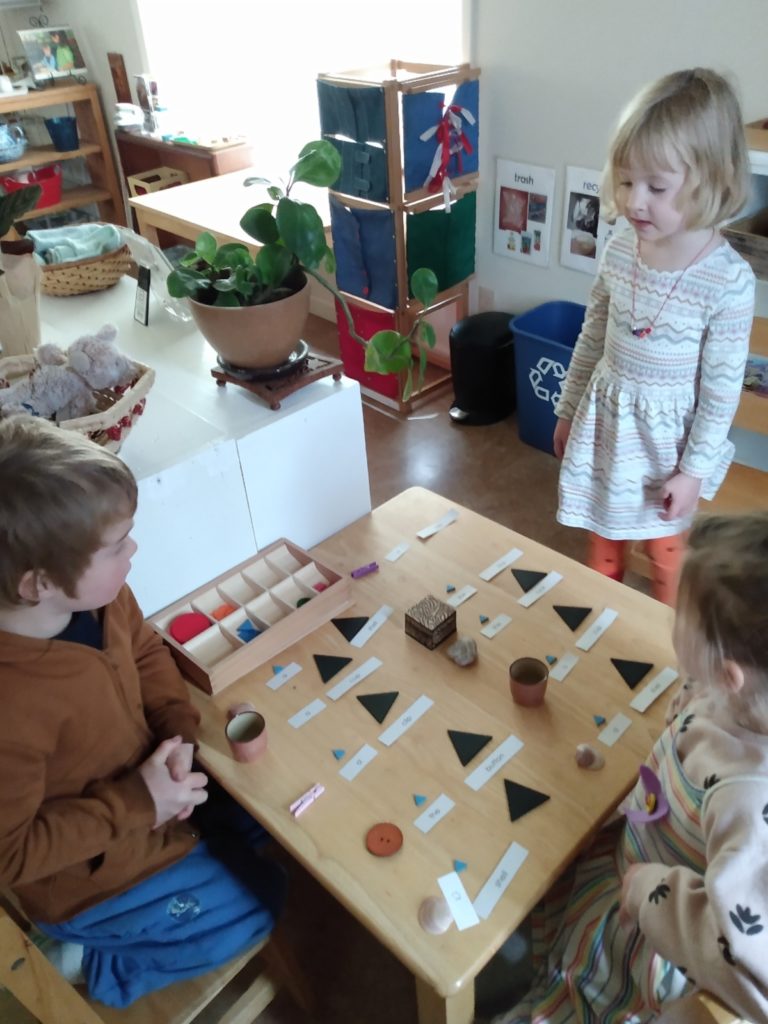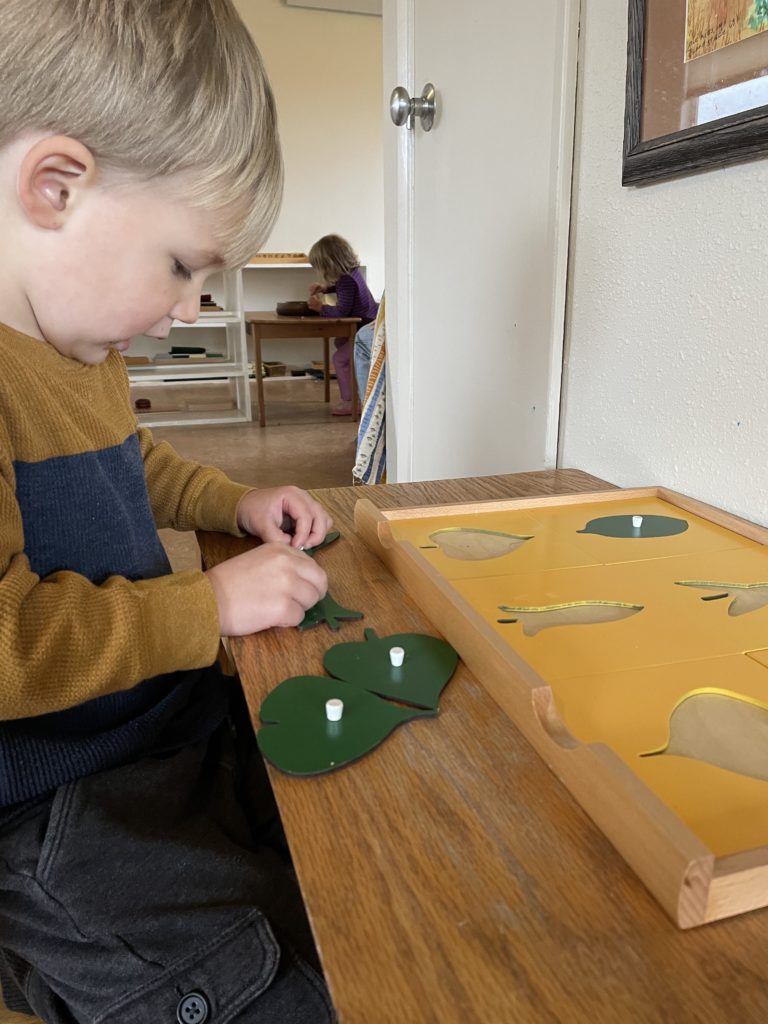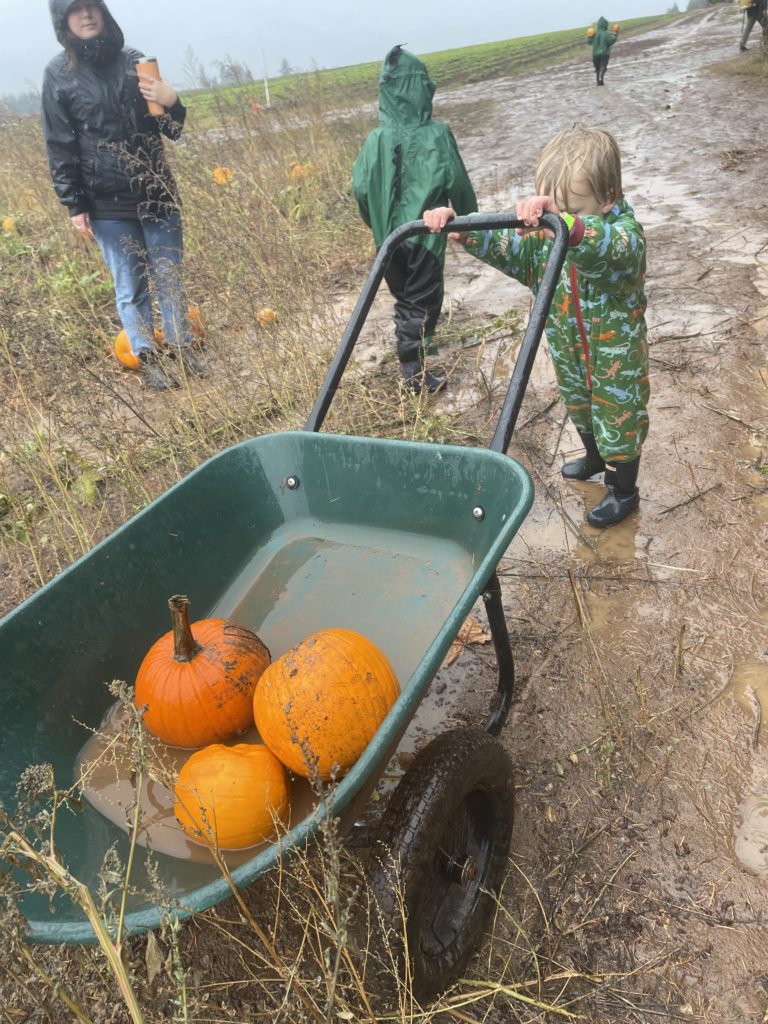Bees have been buzzing, the sun has been shining, birds have been chirping, squirrels have been digging and children have been busy laughing, smiling, singing, balancing, collecting, digging and conversing! It has been a busy little start to the school year over here at Frog Song Montessori Preschool. Over half of our class graduated in August and we have been joyfully welcoming many new faces into our little community this year. Some younger friends have become exuberant, helpful leaders, showing our new friends how things are done in the classroom. Although the start of school is especially busy for us teachers as we orient new families and their children, it is always a good reminder to sit back and watch what the children are capable of without our help. It is a gift to get to be a “fly on the wall” in a classroom of socially cohesive children and we are soaking up these moments as often as we can!
